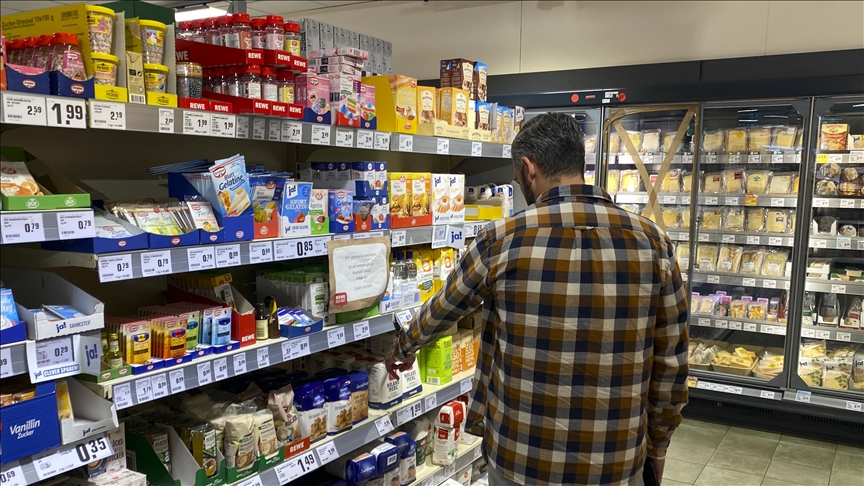Istanbul, Turkey–The commodity markets saw supply concerns and rises by optimism from China, despite the negative impact of the Fed’s announcements, sanctions, and ongoing geopolitical risks.
Uncertainties as to when the Fed will start cutting interest rates persist, and the minutes of last week’s Federal Open Market Committee (FOMC) meeting showed that the bank officials are concerned about rapid monetary policy easing, as they are weighing the possibility that further progress in curbing inflation may take longer than expected.
“Most participants noted the risks of moving too quickly to ease the stance of policy and emphasized the importance of carefully assessing incoming data in judging whether inflation is moving down sustainably to 2%,” the report said. However, some bank officials mentioned that lowering risks too quickly may introduce upside and downside risks.
Therefore, the probability of the Fed’s starting to cut interest rates in May dropped to 25%, and the probability in June also fell to 67%.
Price of gold rises as demand for US Dollar goes down
The price of gold rose to $2,036 as investors turned to “safe haven” commodities due to the downward trend in the US Dollar Index and the ongoing tensions in the Middle East.
The average interest rate for a 30-year mortgage in the US went above 7% once again, reaching its highest level since December 2023, at 7.06%.
The rise in mortgage rates was a negative factor for the US economy and households, which led to a decrease in demand for the US Dollar, analysts say, as the US Dollar Index Futures was at 103.9 last week, down 0.3%.
Particularly, the historic highs in the New York Stock Exchange negatively impacted silver prices, a safe haven commodity.
In light of these developments, the ounce price of gold increased by 1.2% and palladium by 2.5%, whereas silver decreased by 1.9% and platinum by 0.8%.
The news of more sanctions to be imposed on Russia caused palladium and base metals to rice, as US President Joe Biden announced that they have decided to impose more than 500 new sanctions on the country due to the death of Alexei Navalny in prison, the opposition leader and anti-corruption activist in Russia.
The price of copper rose as the People’s Bank of China (PBoC) cut its five-year loan interest rate, which is a reference for real estate loans, by 25 basis points, from 4.20% to 3.59%.
Given these circumstances, copper gained 1.2%, lead 1.5%, nickel 7%, and zinc 1.1%, whereas aluminum lost 1.5%.
Energy group sees downward trend
Libya’s National Oil Corporation announced on Jan. 7 that the force majeure state had been declared in the Sharara, the country’s largest oil with a daily production capacity of 340,000 barrels, making up the total oil consumed by one-third of the country’s population.
The announcement that the force majeure state in Libya’s largest oil field would be lifted and production would resume played a significant role in the decline in oil prices.
The recent data revealing a weakening demand in the US restricted the rise in oil prices, as the crude oil stocks in the country increased by 7.1 million barrels in the previous week, according to the American Petroleum Institute, with market expectations for a 4.2-million-barrel increase.
Considering this news, Brent crude oil saw a downtick of 2.2%, and natural gas traded on the New York Mercantile Exchange at 1.7%.
Agricultural group on mixed course
Lower wheat deliveries in Europe caused wheat prices to go up, and increased expectations for demand with the decline in the US Dollar Index also pushed prices upwards.
The decline in oil prices also caused corn prices to go down.
The price of corn was at $4.11 and soybean at $11.38, their lowest levels since November 2020.
In view of these developments, the price of wheat traded on the Chicago Mercantile Exchange went up 1.5%, while corn went down 3.7% and soybeans 2.8%.
The decline in the Brazilian Real also impacted the coffee market negatively, and as the sugar production in the country continued to increase, it put pressure on the prices, with expectations of a production deficit in the new season also giving rise to sugar prices.
The International Sugar Organization (ISO) forecast a production deficit of 2.12 million tons in the 2023/24 season.
Cocoa prices rose as cocoa deliveries in the Ivory Coast declined following warmer temperatures and reduced rainfall.
Ghana’s lowered cocoa production forecast for the 2023/2024 season also caused cocoa prices to move upwards.
Given these changes, sugar lost 1.9% and coffee 3.4%, whereas cocoa hit a historical high at $6,447, up 17.1%.
Meanwhile, cotton traded on the Intercontinental Exchange followed a flat course.

